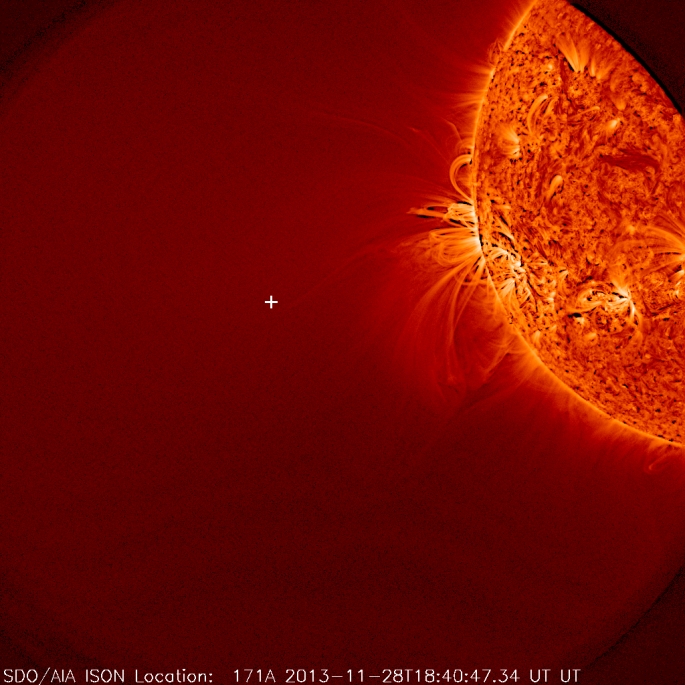Produced when heavy atoms in solar wind strike lighter atoms in comets’ atmosphere

Image credit: X-ray: NASA/CXC/Univ. of CT/B.Snios et al, Optical: DSS, Damian Peach (damianpeach.com)
Space news (planetary dynamics: Oort Cloud comets; PanSTARRS & ISON) – 90 & 130 million miles from Earth, respectively, observing x-ray emissions as solar wind particles strike comets’ atmosphere –

Thousands of years ago, ancient sky watchers observed terrible, fiery balls of fire that appeared suddenly in the sky. Hairy stars resembling fiery swords that appeared unpredictably, ancient astronomers and societies interpreted these terrifying, fear inducing travelers as harbingers of doom predicting impending disaster or even success in a future endeavor. Often connecting their appearance to famine, war, and plague, to the death of a beloved or fall of an empire or warlord, throughout history comets filled us with fear and even during modern times continue to entrance and fill us with awe.

Image Credit: ESA/NASA/SOHO/SDO/GSFC
Recently, astronomers working with NASA’s Chandra X-ray Observatory detected x-ray emissions produced as particles in the solar wind struck the atmospheres’ of Comets ISON and PanSTARRS. Two long-period comets originating in the Oort Cloud far beyond the orbit of the planets, solar scientists use them as laboratories to study the composition of the stream of exotic particles flowing from the Sun called the solar wind. Astrophysicists determined x-ray emissions were produced as heavy particles in the solar wind struck lighter particles in the atmospheres’ of Comets ISON and PanSTARRS. X-ray emissions with varying shapes indicating differences in the solar wind and atmospheres’ of these comets at the time of the observations.

Credits: NASA/SDO
Observations of Comet ISON detected a greenish hue attributed to gasses like cyanogen, which contains oxygen and nitrogen, streaming from its nucleus. Chandra data obtained shows this comet has a well-developed, parabolic shape indicative of a dense atmosphere. In comparison, observations of Comet PanSTARRS show a more diffuse x-ray spectrum, indicating it has less gas and more dust in its atmosphere. Observations that agree with independent measurements made by NASA’s Advanced Composition Explorer and other instruments. Planetary scientists plan to use the detailed computer simulations they developed during these studies to help analyze the data obtained by Chandra of Comets ISON and PanSTARRS to investigate interactions between the solar wind and other comets, planets, and even interstellar gas.

Credits: NASA
Learn more about the role planetary scientists suspect comets and asteroids played during the opening moments of the birth of the solar system and planets.
Read and learn about viewing the ghostly glow of streaking Orionid meteorites.
Learn about what planetary scientists discovered during the recent visit of NASA’s Deep Impact spacecraft to comet Hartley 2.
After perihelion comet, ISON’s changed in ways planetary scientists are trying to determine at this time. Watch this NASA video on the ultimate fate of comet ISON.
Join NASA’s journey to the beginning of space and time here.
Watch this NASA-sponsored tour of Comet ISON.
Discover more about comet PanSTARRS here.
Learn more about NASA’s Chandra X-ray Observatory.
